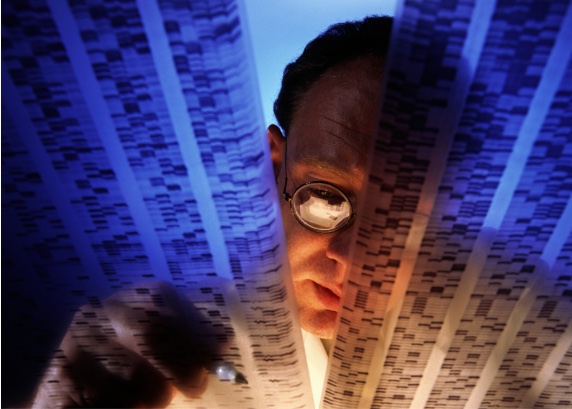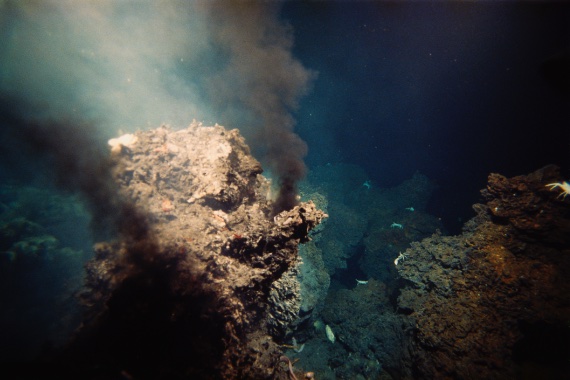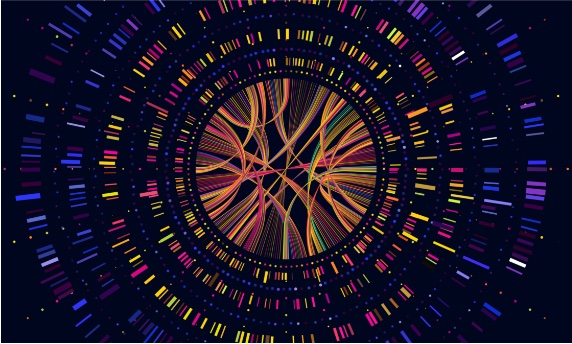We don’t know how life on Earth began. With all the scientific knowledge accumulated over the centuries, we still don’t have a definitive answer as to how the first living thing arose from its basic components, although there are hypotheses. But we do know that it also had a genome. All terrestrial species are descended from those primitive micro-organisms and therefore we all carry their genetic inheritance. By using modern techniques to study and compare the genomes of today’s organisms, researchers can decipher the history of terrestrial life through genes, and even get a glimpse of the common great-great-great grandfather of all life that inhabits our planet today.

We inherit our genes from our parents, and they from theirs. Since 50% of an individual’s genome comes from each parent, we resemble both parents, but we are not identical to either—we are a mixture. Only identical twins have, in principle, cloned genomes; siblings are distinct mosaics, mixtures of different parts of their parents’ genomes.
The Last Universal Common Ancestor
But if, instead of thinking in terms of generations over years or centuries, we broaden the focus to the scale of millennia, or hundreds of millennia, then all humans are also genetic heirs of the earliest Homo sapiens, an archaic form of our species. These, in turn, descended from some other, more primitive species, which gave rise not only to our own, but also to other possibly divergent but related lineages, such as the Neanderthals. In this way, our genome preserves the traces of our species’ history. By comparing the genetic similarity of individuals, it is possible to determine family relationships; by comparing the genetic similarity of populations, it is possible to reconstruct the ancient migrations, separations and blending of different human ethnicities.

But if we extend the focus even further, to millions of years, we see how the film of the evolution of species rewinds: the human and chimpanzee lineages diverged between 7 and 12 million years ago, the gorillas a little further back, and before that we can see how primates arose from a common trunk with other mammals; our family and the rodent family converged about 90 million years ago in some small furry creature that was our mutual ancestor. Mammals, in turn, had an earlier shared ancestor with other animal groups.
And in this way we can go back to the time early in Earth’s history when there lived what scientists call LUCA—the Last Universal Common Ancestor; not the first living thing, but the last before the great groups of organisms branched out from it: bacteria, archaea and eukaryotes, the latter encompassing fungi, plants, animals and other groups of beings based on cells with nuclei.
From radiocarbon to molecular clocks
But how can scientists unravel this succession of evolutionary inheritance over hundreds, thousands or millions of years? Of course, the fossil record is an irreplaceable tool, including the dating of remains by radiocarbon and other radioactive isotope techniques. But these more classical techniques have now been joined by molecular clocks: since genes vary over time, by studying this rate of variation it is possible to reconstruct the evolutionary history of species; the closer the kinship, the greater the similarity between genes.

Our genome mixes that of our parents, but we don’t inherit pure copies of their chromosomes. There are two mechanisms that generate variations over time on which natural selection acts: recombination and mutation. The first is that the homologous chromosomes of the father and mother exchange fragments with each other when the two gametes unite, so that the chromosomes that the offspring receive are not exact copies of those of their parents. In humans, an average of 36 recombination events occur in each generation. By tracking their accumulation over time, the history of human lineages can be traced on a scale of approximately the last 100,000 years.
The second mechanism, mutation, is the occurrence of point variations in the letters of DNA, called bases. These arise from errors in DNA replication, either spontaneously or through the action of mutagens such as radiation or chemical agents. In humans, the mutation rate has been established as between 10 and 100 per generation, with more specific estimates of 60-70 (although these estimates are still under debate). In single-celled eukaryotes, such as protozoa, and in bacteria, a rate of 0.003 mutations per generation has been calculated. From these figures, researchers construct molecular clocks, algorithmic models that trace the chronology of the evolution of species and that are refined and calibrated with new findings.

Thanks to molecular clocks, recent estimates place LUCA at nearly 4 billion years ago, earlier than the fossil record suggests. Science is still trying to determine the characteristics of that microbe, which the current hypothesis suggests thrived in the hot waters of hydrothermal vents at the bottom of the ocean; what its genome, its cellular machinery and its proteins were like; a window on our first ancestor, perhaps the closest that scientific evidence can bring us to the mysterious origin of life.
Javier Yanes
Comments on this publication